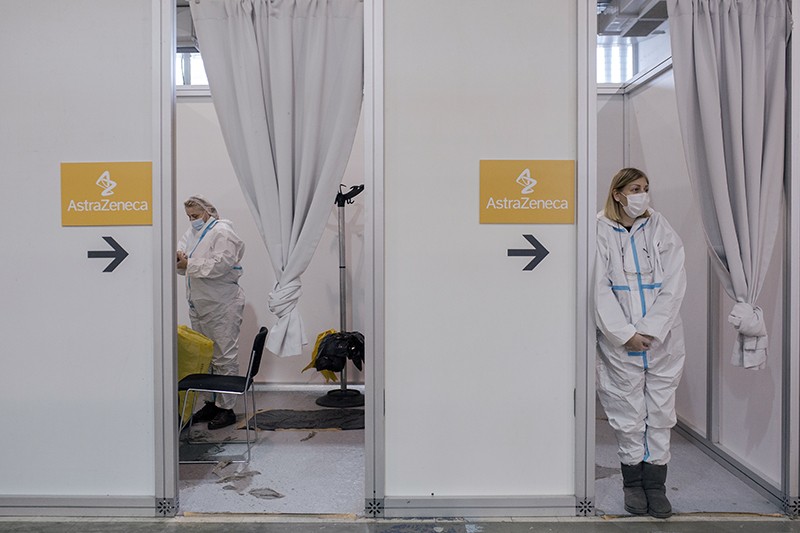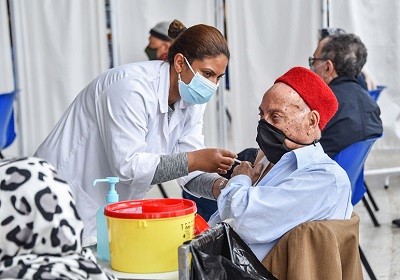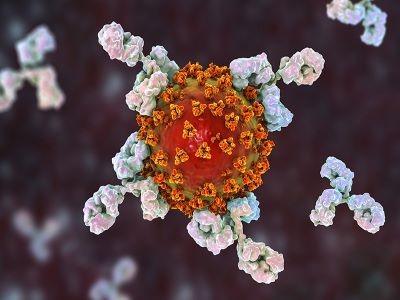The next generation of COVID-19 vaccines is on its way, but those shots will be looking to take a seat at an already crowded table.
On the menu in some countries this autumn will be the familiar standards — mRNA and protein vaccines based on the spike protein from the ancestral version of SARS-CoV-2, which ushered in the pandemic. Alongside them will be a smattering of new specials, including mRNA vaccines with spike sequences both from ancestral virus and from Omicron variants.
It is a luxury of choice that many countries don’t have. But the range of options, which will be available at different times, has left people wondering which vaccines to take, and when. “These are hard questions, and there are no real right answers,” says Kathryn Edwards, a paediatrician and director of the Vanderbilt Vaccine Research Program at Vanderbilt University Medical Center in Nashville, Tennessee.
Nature asked specialists what evidence is on hand to help make the decision.
What do we know about the Omicron-specific versions of the COVID vaccine?
Relatively little.
On 15 August, the United Kingdom authorized the use of a two-pronged, or ‘bivalent’, vaccine containing both ancestral and Omicron BA.1 sequences of the spike protein, which the virus uses to latch onto human cells. The country’s Joint Committee on Vaccination and Immunisation recommended the bivalent vaccine as one option, alongside the first-generation mRNA vaccines, in the country’s autumn booster programme.
But BA.1 has been largely replaced by other Omicron variants in many countries, and the BA.4 and BA.5 variants now dominate in the United States and Europe. As a result, US regulators have said they intend to bypass BA.1-specific vaccines and instead authorize COVID-19 vaccines — expected to be available this autumn — that include spike sequences from BA.4 and BA.5.
Laboratory data show that the BA.1 bivalent vaccines stimulate the production of antibodies that can ‘neutralize’ the virus — that is, stop it from infecting host cells. Those data suggest that the inclusion of BA.1 sequences boosts neutralization of Omicron by about twofold1,2, but it’s unclear how much, if any, extra protection against illness this will produce. Neutralization data for BA.4- and BA.5-specific vaccines aren’t expected until around mid-September.
The underwhelming results for the bivalent vaccine are probably due to a phenomenon known as immune imprinting, says microbiologist John Moore at Weill Cornell Medicine in New York City. By now, much of the population has either been vaccinated or infected with an earlier variant of SARS-CoV-2. The immune system has been trained to remember this variant — and a dose of vaccine, even one with Omicron-specific components, will tend to boost those earlier immunological memories. The degree of Omicron-specific response will be relatively small, says Moore.
“If we had an immunologically naive population of people who had not been infected or vaccinated, it would make absolute sense for the vaccine to be from the Omicron lineage,” he says. “But how many people are neither infected nor vaccinated?”
If I’m due to get a booster now, should I get a regular booster or wait for one that is Omicron specific?
In countries such as the United States, people eligible for a booster in the summer have been wrestling with a decision: take a booster shot of the original vaccine, or wait a few more months for a version containing Omicron-specific spike.
Several physicians told Nature that the decision should be a personal one, and people should factor in whether they’re at risk of serious disease, their community’s infection rate and how well they can shield themselves from SARS-CoV-2. “It’s a lot of individual decision-making,” says Meagan Deming, an infectious-disease specialist at the University of Maryland School of Medicine in Baltimore.
It also depends on how long the wait is for the Omicron-specific vaccine, says Angela Branche, an infectious-disease specialist at the University of Rochester Medical Centre in New York. “The answer to that question is constantly changing,” she says. “If you asked me two or three months ago, I’d have said the Omicron-specific version of the vaccine is several months away, get your booster now.” But now, the wait is potentially only about a month, so she is more willing to advise her low-risk patients to hold out for new vaccines.
Yet others argue that there is still no need to delay a booster even a few weeks for the sake of receiving a new vaccine that hasn’t been shown to offer a significant advantage over the old ones. “There’s so little potential advantage to having an Omicron booster,” says Moore. “Why bother, when you can use the existing booster sooner?”
How long should I wait between COVID-19 vaccine boosters?
Here, researchers are largely in agreement: it’s best to wait at least four months between doses. Although receiving a COVID-19 booster sooner does not cause harm, there’s probably little benefit.
One study found that the antibody response to vaccination was weaker in people who had high antibody levels prior to getting the shot than in people with lower levels of pre-vaccination antibodies3. This is not a surprise to immunologists, says study author and viral immunologist Pablo Penaloza-MacMaster at Northwestern University Feinberg School of Medicine in Chicago: circulating antibodies might clear the spike protein in the vaccine before the immune response has a chance to be boosted.
“If the vaccines are given in a very short period of time, without allowing a resting period, you’re minimizing the effect,” he says.
Can you get too many boosters?
As long as the boosters are sensibly spaced, there’s really no such thing as “too many” from an individual standpoint, says Moore. From a public-health standpoint, however, a focus on boosting everyone could shift attention and resources away from the people who most need boosters: those over 50 years old, and people with pre-existing health conditions.
Boosters can significantly decrease the risk of serious disease for these groups. For younger people without risk factors, the benefits of a booster are less pronounced, but it is possible that a person who was boosted shortly before an infection might clear the virus faster— and shed less virus into their community — than someone whose antibody levels are lower when they are infected, says Penaloza-MacMaster.
Still, such a benefit is likely to be more transient and less meaningful than the benefit for people at risk of serious illness, says Moore. “The value for the under-50s in good health is far less certain,” he says. “That’s going to be a lower priority from a public-health perspective.”
COVID-19 - Latest - Google News
August 19, 2022 at 09:17PM
https://ift.tt/DrYb8hJ
Which COVID boosters to take and when: a guide for the perplexed - Nature.com
COVID-19 - Latest - Google News
https://ift.tt/IlPZBoi
Bagikan Berita Ini


















0 Response to "Which COVID boosters to take and when: a guide for the perplexed - Nature.com"
Post a Comment